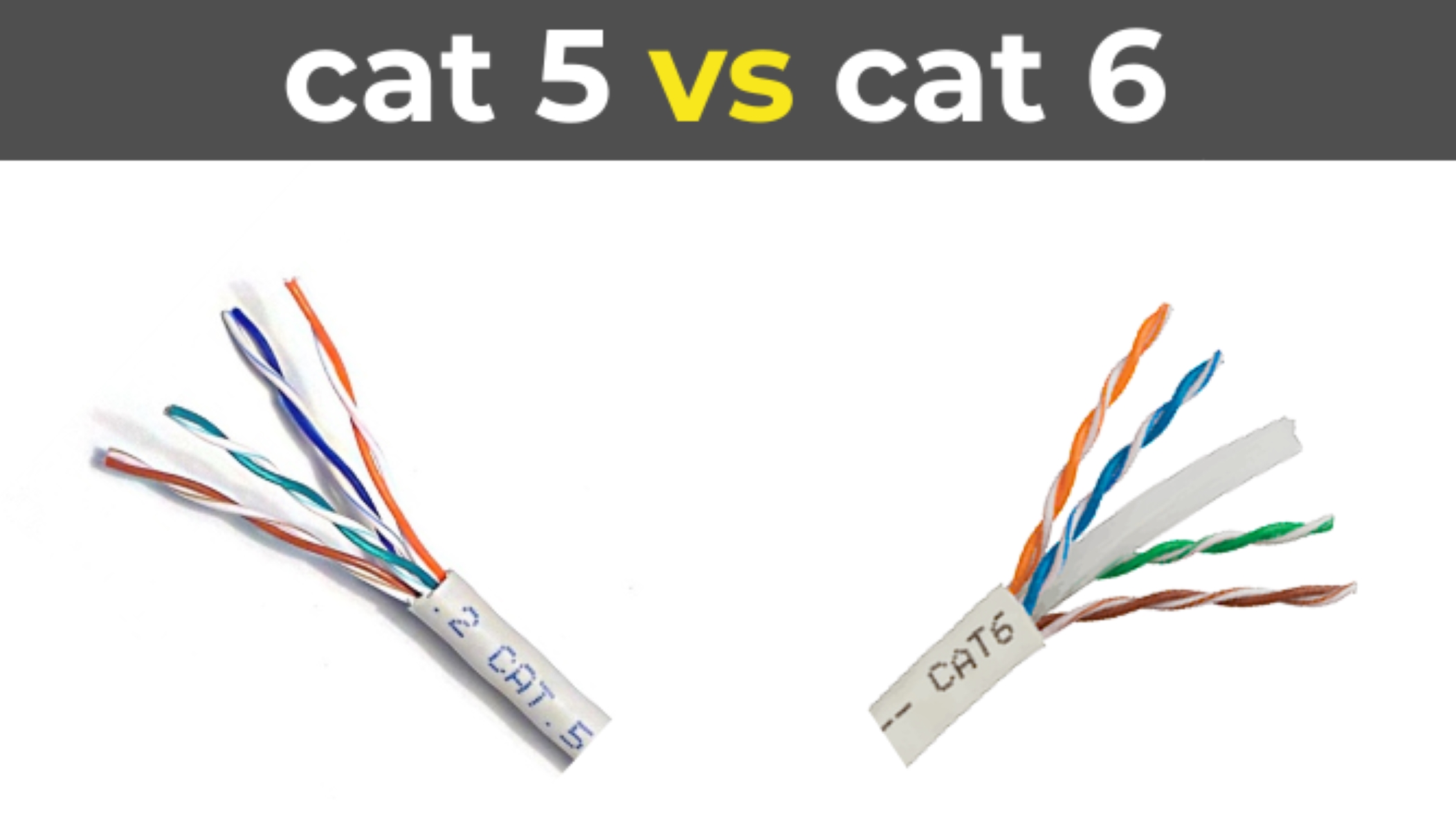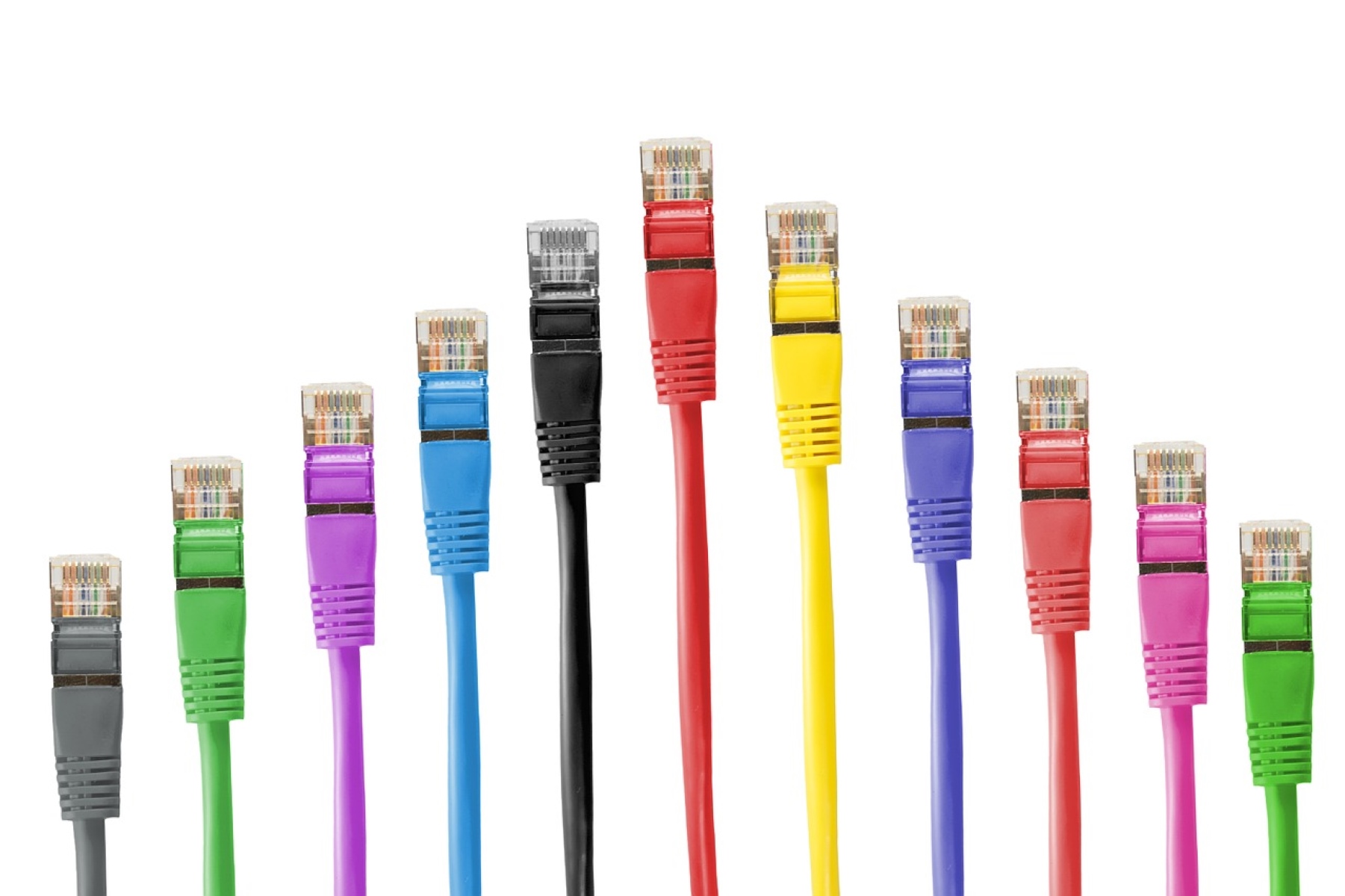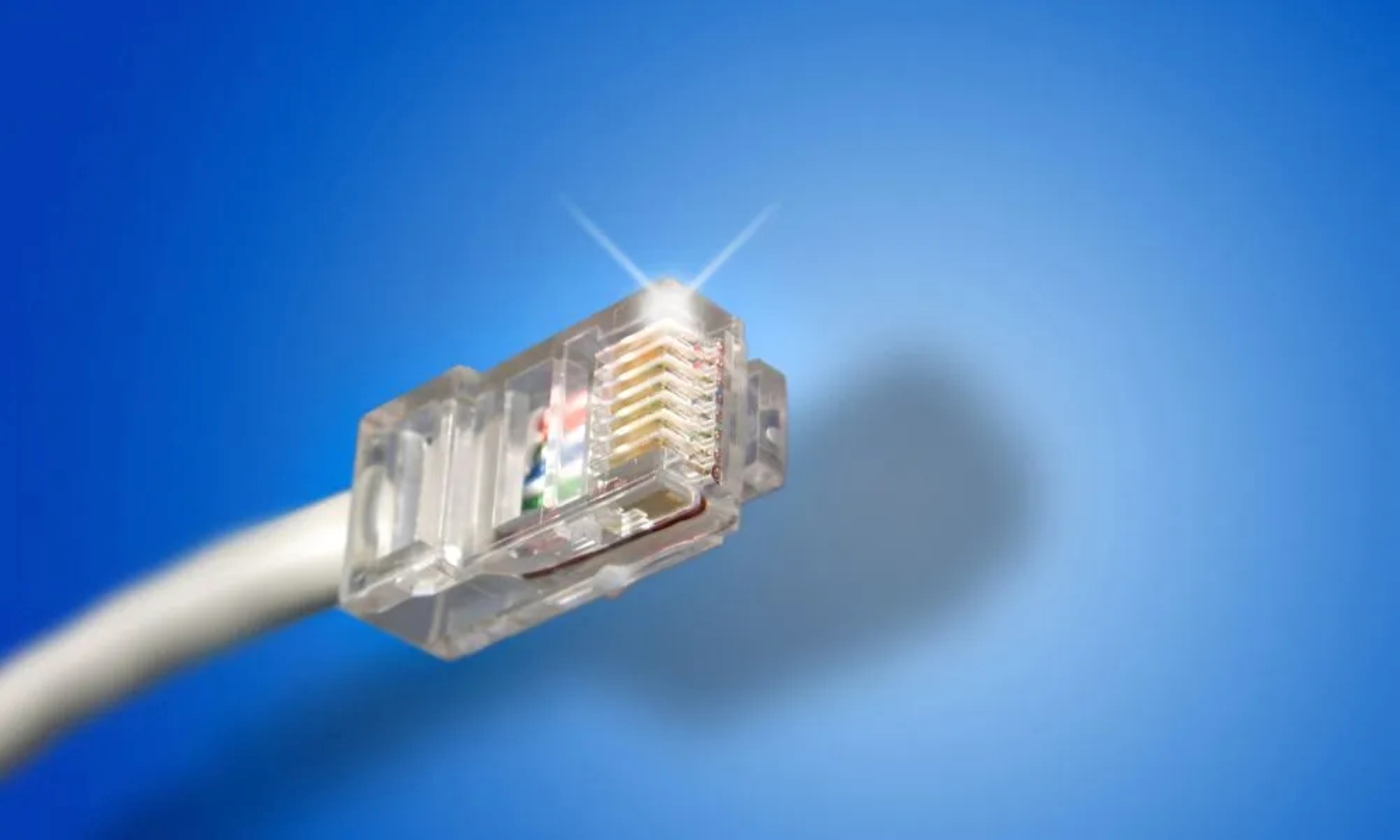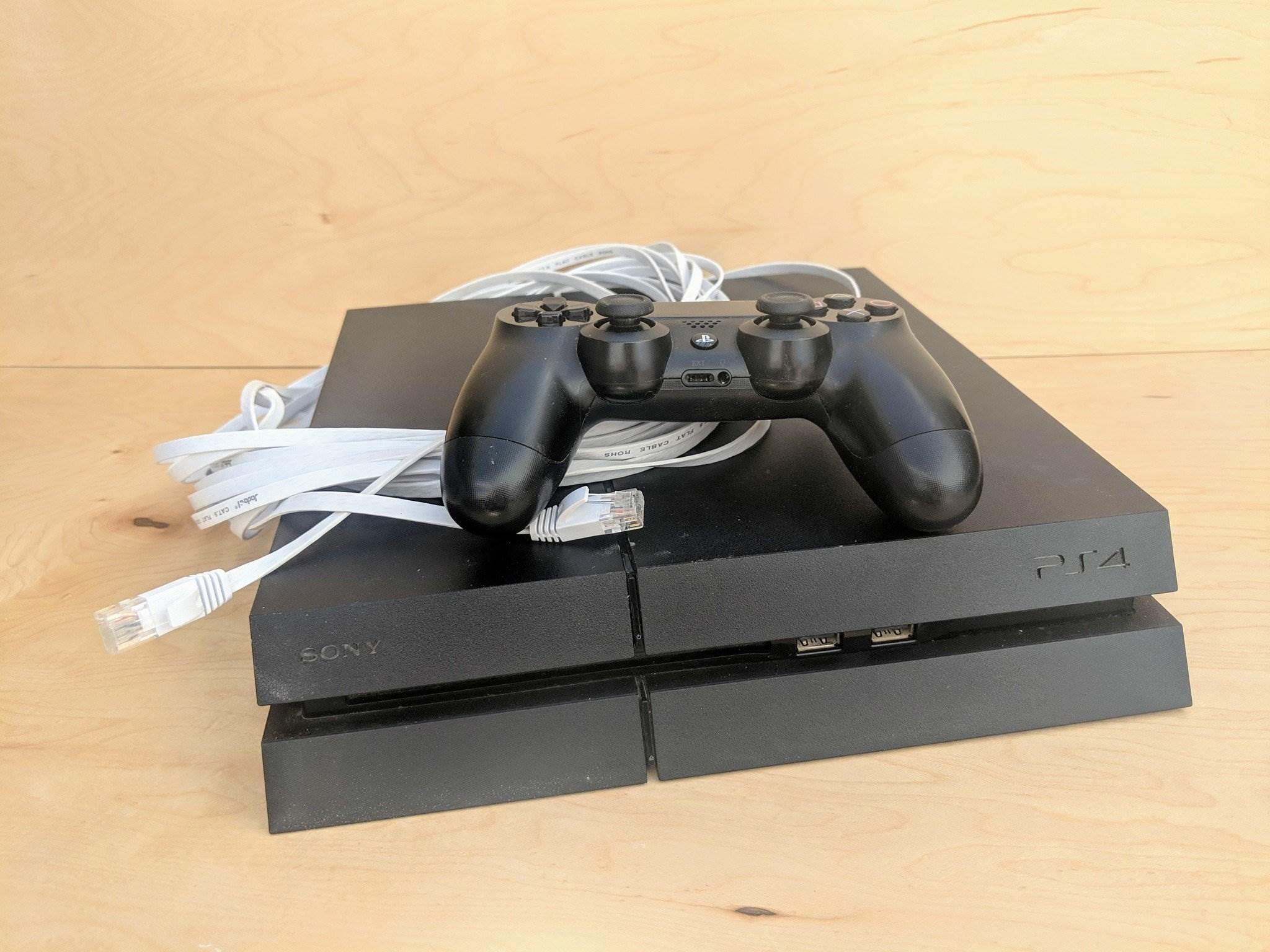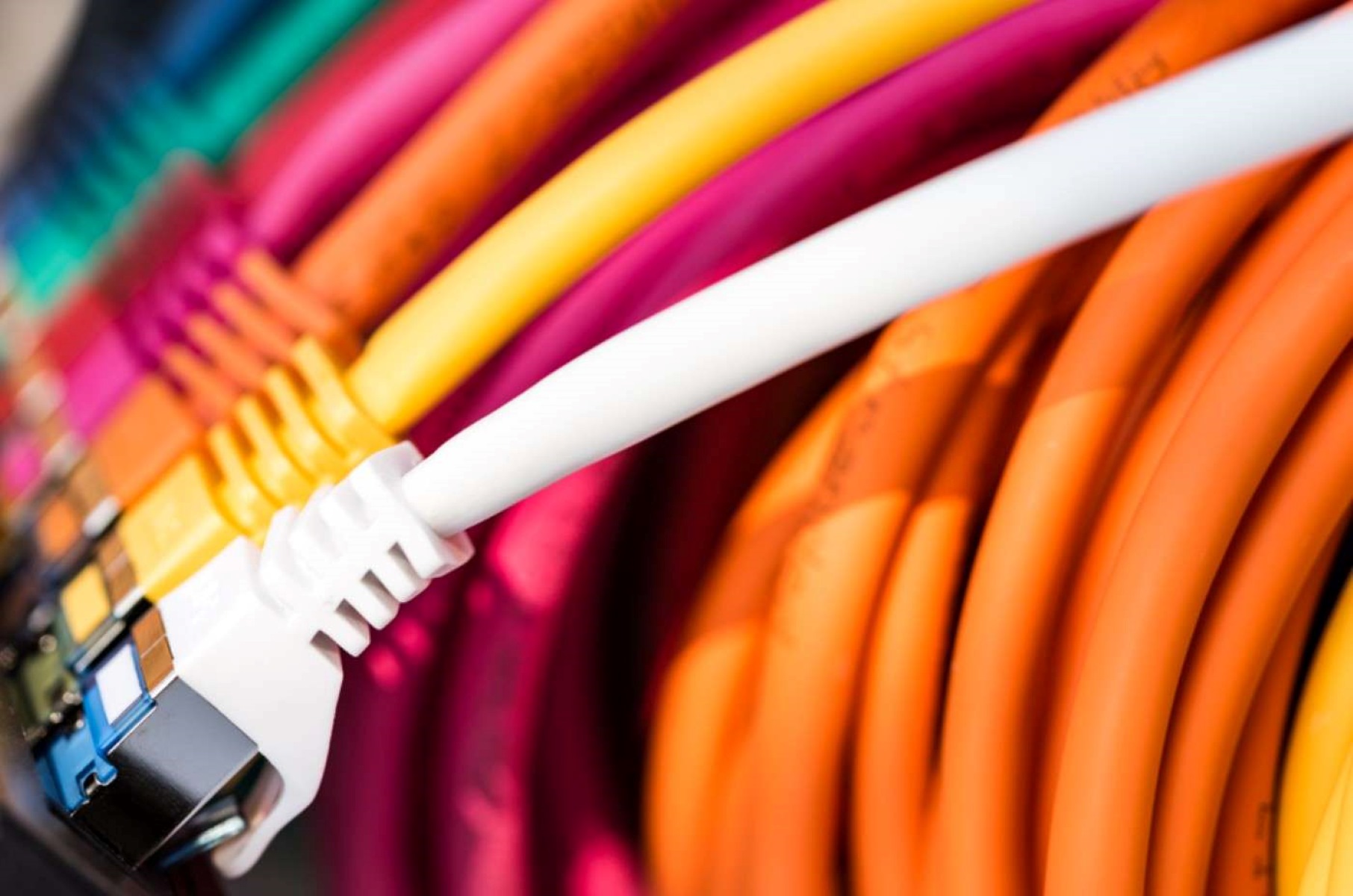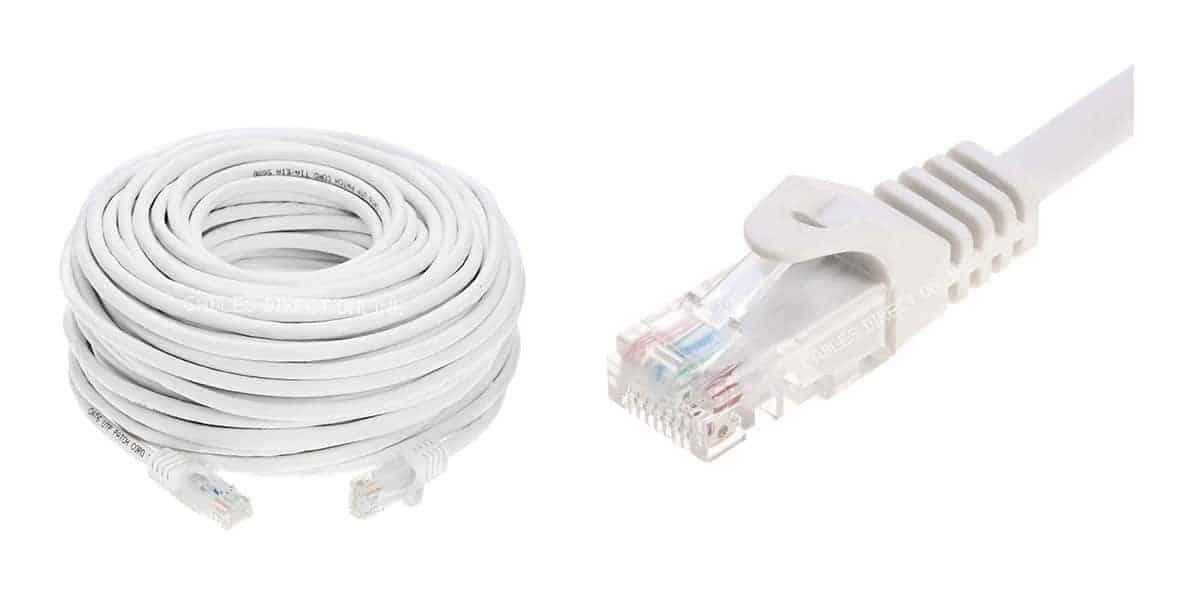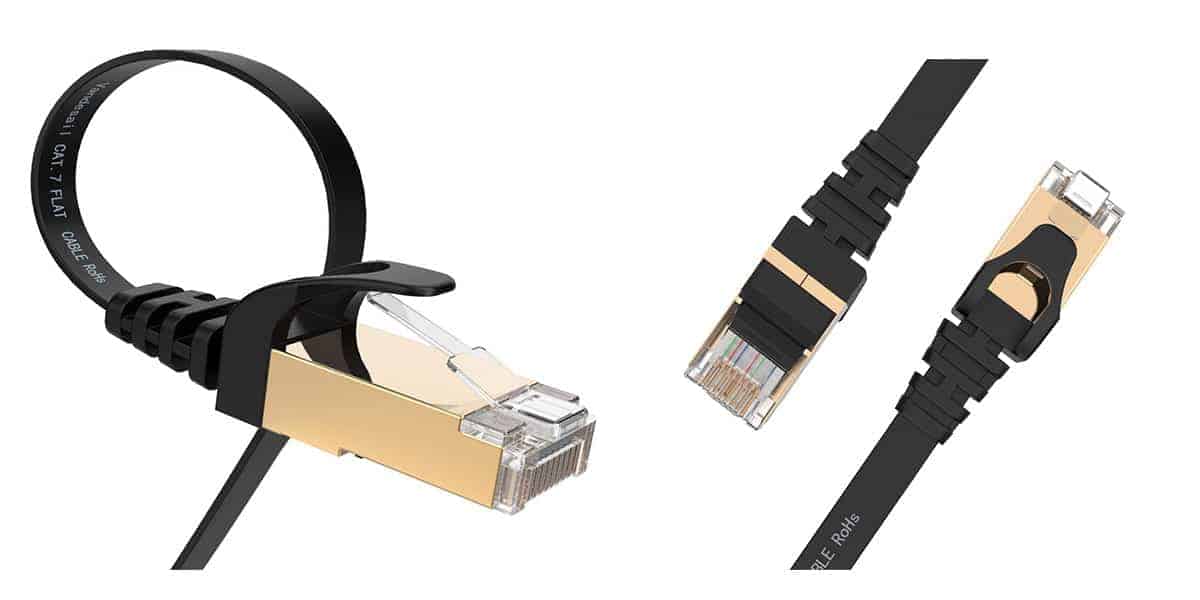Introduction
Ethernet cables are an essential component of any computer network, as they enable the transfer of data between devices. They come in various types, but two common options are Cat 5 and Cat 6 cables. These cables play a crucial role in establishing a stable and efficient network connection.
Understanding the difference between Cat 5 and Cat 6 ethernet cables is essential for making informed decisions when setting up a network. Each cable has its own set of advantages and limitations, which can significantly impact network speed, performance, and reliability.
Whether you are a tech enthusiast, a small business owner, or an IT professional, having a basic understanding of Cat 5 and Cat 6 ethernet cables can be invaluable when it comes to optimizing your network infrastructure.
In this article, we will explore the differences between Cat 5 and Cat 6 ethernet cables, including their performance capabilities, cost considerations, and future-proofing potential. By the end of this article, you will be equipped with the knowledge necessary to make an informed decision when choosing the right ethernet cable for your specific networking needs.
So, without further ado, let’s dive into the world of Cat 5 and Cat 6 ethernet cables and explore their similarities, differences, and everything in between.
What is Ethernet Cable?
Ethernet cable, also known as network cable or LAN (Local Area Network) cable, is a type of cable used to connect computers, servers, routers, switches, and other network devices. It facilitates the transmission of data between these devices, allowing them to communicate within a network and access the internet.
Ethernet cables have been the go-to solution for wired network connections for several decades. They are designed to provide reliable and high-speed data transmission, making them an essential component in both residential and commercial networking setups.
Ethernet cables utilize copper or fiber optic wires, which enable the transmission of electrical signals carrying data packets. These cables are standardized by various categories, with Cat 5 (Category 5) and Cat 6 (Category 6) being two common choices.
These cables are typically designed with an RJ-45 connector, which is compatible with Ethernet ports found in most devices. By plugging one end of the cable into a device’s Ethernet port and the other end into a router or switch, users can establish a solid wired connection for data transfer.
Ethernet cables provide several advantages over wireless connections, including faster and more stable data transfer rates, enhanced security, and reduced susceptibility to interference. They are particularly beneficial in scenarios where a reliable and consistent network connection is crucial, such as in gaming, streaming, and data-intensive applications.
While Wi-Fi technology has seen significant advancements and widespread adoption, Ethernet cables remain an important choice for many users who prioritize speed, reliability, and network performance.
Now that we have a better understanding of what Ethernet cables are, let’s delve deeper into the specifics of Cat 5 and Cat 6 ethernet cables to understand the key differences between them.
Understanding Cat 5 Ethernet Cable
Cat 5 Ethernet cable, short for Category 5, is an older generation of network cable that has been widely used in networking infrastructure. It was one of the first cables to support Fast Ethernet (10/100 Mbps) and remains a popular choice for many residential and small-scale commercial networks.
Cat 5 cables consist of four pairs of twisted copper wires enclosed in a sheath. These wires are twisted together to minimize crosstalk and interference, ensuring reliable data transmission. The cable is terminated with an RJ-45 connector on both ends, allowing it to be easily connected to network devices.
While Cat 5 cables are capable of delivering decent network speeds, they have certain limitations that need to be taken into account. One key limitation is their data transfer capacity. Cat 5 cables are designed to handle a maximum bandwidth of up to 100 MHz, which allows for data transmission speeds of up to 1000 megabits per second (Mbps) for short distances.
Another important consideration is the maximum distance over which reliable signal transmission can be maintained. Cat 5 cables can reliably transmit data up to a distance of 100 meters (328 feet). Beyond this distance, signal degradation may result in slower speeds or loss of connectivity.
Furthermore, Cat 5 cables lack advanced features like enhanced shielding to protect against electromagnetic interference (EMI) and crosstalk. This can become a concern in environments with high interference levels, such as those with many electrical devices nearby.
While Cat 5 Ethernet cables are suitable for basic networking needs and offer an affordable solution, they may not be sufficient for more demanding applications that require higher data transfer speeds and greater reliability.
It’s important to note that Cat 5e (Category 5e) cables are an improved version that provides better performance compared to standard Cat 5 cables. Cat 5e cables have enhanced shielding and reduced crosstalk, allowing for data transmission at speeds of up to 1000 Mbps and over longer distances.
In the next section, we will explore Cat 6 Ethernet cables, which offer significant advancements over Cat 5 cables in terms of speed, performance, and future-proofing capabilities.
Understanding Cat 6 Ethernet Cable
Cat 6 Ethernet cable, short for Category 6, is a more advanced and newer generation of network cable compared to Cat 5. It has gained popularity and become the preferred choice for many users who require higher data transfer speeds and improved network performance.
Similar to Cat 5 cables, Cat 6 cables consist of four pairs of twisted copper wires, but they are designed with stricter specifications and better construction techniques. The tighter twists and improved insulation help minimize interference and crosstalk, leading to more reliable and faster data transmission.
One of the key advantages of Cat 6 cables is their significantly higher bandwidth capacity. They are capable of supporting data transfer rates of up to 10 gigabits per second (Gbps), making them suitable for demanding applications like video streaming, online gaming, and large file transfers.
In addition to higher speeds, Cat 6 cables offer improved signal integrity and reduced packet loss, resulting in a more stable and consistent network connection. This can be particularly beneficial in environments with high network traffic or in applications that require low latency.
Furthermore, Cat 6 cables provide better resistance to electromagnetic interference (EMI) and crosstalk compared to Cat 5 cables. This is achieved through tighter twists and better insulation, ensuring cleaner signal transmission and reducing the likelihood of data corruption or distortion.
When it comes to distance limitations, Cat 6 cables can reliably transmit data over distances of up to 55 meters (180 feet) at 10 Gbps speeds. For shorter distances, they can support even higher speeds, reaching up to 40 Gbps over distances of 37 meters (121 feet).
While Cat 6 cables offer significant improvements over their predecessors, it’s important to note that their performance is dependent on the entire network infrastructure. This includes using compatible network equipment, such as routers, switches, and network cards that support Cat 6 speeds.
Whether you are setting up a new network or considering an upgrade, understanding the capabilities and advantages of Cat 6 Ethernet cables can help you make an informed decision to optimize your network performance.
In the next section, we will compare Cat 5 and Cat 6 Ethernet cables in terms of their speed and performance differences to better understand which one is the right choice for your networking needs.
Comparison of Cat 5 and Cat 6 Ethernet Cable
When deciding between Cat 5 and Cat 6 Ethernet cables, it’s important to consider the specific needs of your network. Both cables have their own set of advantages and limitations that can significantly impact network performance, speed, and reliability.
Speed and Performance Differences: Cat 5 cables are designed to support data transmission speeds of up to 1000 Mbps (1 Gbps), while Cat 6 cables can handle speeds up to 10 Gbps. This makes Cat 6 cables ideal for applications that require higher bandwidth and faster data transfer rates.
Distance Limitations: Cat 5 cables can reliably transmit data up to a distance of 100 meters (328 feet), whereas Cat 6 cables can achieve similar performance up to a distance of 55 meters (180 feet) at 10 Gbps speeds. For shorter distances, Cat 6 cables can support even higher speeds, making them suitable for applications that require faster connectivity over shorter distances.
Cost Differences: Cat 5 cables are generally more affordable compared to Cat 6 cables. The higher performance and advanced construction techniques of Cat 6 cables contribute to their higher cost. However, the price difference has narrowed over time, making Cat 6 cables a more cost-effective option for those seeking improved network performance.
Shielding and Crosstalk: Cat 6 cables offer better shielding and reduced crosstalk compared to Cat 5 cables. The tighter twists and improved insulation in Cat 6 cables minimize electromagnetic interference (EMI) and reduce signal degradation, resulting in cleaner and more reliable data transmission.
Compatibility and Future-proofing: Cat 5 cables are compatible with older networking equipment, making them suitable for basic networking needs. However, Cat 6 cables are backward compatible with Cat 5 and Cat 5e connections, and they provide better future-proofing capabilities to support evolving network infrastructure requirements.
Ultimately, the choice between Cat 5 and Cat 6 Ethernet cables depends on your specific networking needs. If you require faster speeds, improved performance, and better reliability, Cat 6 cables are the recommended choice. However, if you have basic networking needs and want a more cost-effective solution, Cat 5 cables may be sufficient.
It’s worth noting that there are also Cat 5e and Cat 6a cables available in the market. Cat 5e cables provide enhanced performance over standard Cat 5 cables, while Cat 6a cables offer even higher speeds and performance compared to Cat 6 cables. These options may be worth considering if you need additional performance improvements for your network.
Now that we have compared Cat 5 and Cat 6 Ethernet cables, let’s explore other factors such as cost, shielding, and compatibility to help you make an informed decision.
Speed and Performance Differences
One of the key factors to consider when choosing between Cat 5 and Cat 6 Ethernet cables is the difference in speed and performance capabilities. These cables have varying capabilities when it comes to data transfer rates, which can significantly impact network speed and overall performance.
Cat 5 Speed: Cat 5 Ethernet cables are designed to support data transmission speeds of up to 1000 megabits per second (Mbps) or 1 gigabit per second (Gbps). This is commonly referred to as Fast Ethernet. While 1 Gbps may be sufficient for basic networking needs and regular internet browsing, it may not be ideal for applications that require higher bandwidth, such as streaming high-definition videos or online gaming.
Cat 6 Speed: In contrast, Cat 6 Ethernet cables offer significantly higher speeds. They are capable of supporting data transmission rates of up to 10 gigabits per second (Gbps), also known as 10 Gigabit Ethernet. This makes Cat 6 cables ideal for high-demand applications that involve large file transfers, video conferencing, or heavy data processing.
With their increased speed capabilities, Cat 6 cables offer faster and more efficient data transfer, providing a seamless and lag-free experience for data-intensive tasks. Whether you’re a gamer, a content creator, or a business owner, the higher speed offered by Cat 6 Ethernet cables can make a noticeable difference in performance.
It’s important to note that the actual speed you achieve will depend not only on the Ethernet cable but also on the devices and network equipment you’re using. All components in the network chain need to be compatible with the maximum speed capability of the cable for optimal performance.
In scenarios where you have a mix of Cat 5 and Cat 6 cables connected to your network equipment, the overall speed will be limited by the lowest capability in the chain. For example, if you have a Cat 6 cable connecting your computer to a Cat 5 switch, the maximum speed you’ll achieve will be 1 Gbps, as that is the maximum speed supported by the Cat 5 switch.
To fully utilize the speed capabilities of Cat 6 cables, it’s recommended to ensure that all network components, including routers, switches, and network interface cards, support Cat 6 speeds. This ensures a seamless and optimized network experience.
Now that we understand the speed and performance differences between Cat 5 and Cat 6 Ethernet cables, let’s explore another important consideration: the distance limitations of these cables.
Distance Limitations
When it comes to Ethernet cables, understanding their distance limitations is crucial for ensuring reliable and consistent data transmission. Both Cat 5 and Cat 6 Ethernet cables have specific distance thresholds over which their performance may degrade, making it important to consider these limitations when planning your network setup.
Cat 5 Distance Limitations: Cat 5 Ethernet cables can reliably transmit data up to a distance of 100 meters or 328 feet. This distance is measured from the Ethernet port on your device to the network switch or router. Within this range, Cat 5 cables can maintain their specified speed and performance. However, it’s important to note that factors such as signal attenuation and interference can impact performance towards the maximum distance limit.
Cat 6 Distance Limitations: Cat 6 Ethernet cables have slightly reduced distance limitations compared to Cat 5 cables when aiming for higher speeds. At 10 Gbps speeds, Cat 6 cables can reliably transmit data up to a distance of 55 meters or 180 feet. Beyond this distance, the signal may experience degradation, potentially resulting in slower speeds or connection instability. However, for shorter distances, Cat 6 cables can support even higher speeds.
It’s important to consider the layout and size of your network infrastructure when choosing between Cat 5 and Cat 6 cables. If your network setup requires longer cable runs or if you need to transmit data over extended distances, Cat 6 cables may be a better choice due to their superior performance capabilities.
For most home and small-scale office setups, the standard distance limitations of both Cat 5 and Cat 6 cables are usually sufficient. However, in larger installations or environments that may require more complex networking, such as large office buildings or data centers, it’s important to plan and consider additional networking equipment, such as network switches or repeaters, to ensure stable and reliable network connectivity over longer distances.
It’s worth noting that in some cases, using network extenders or Ethernet repeaters can help overcome distance limitations by boosting the signal and allowing for longer cable runs. However, it’s always recommended to meet the specifications of the cable for optimal performance and reliability.
Now that we understand the distance limitations of Cat 5 and Cat 6 Ethernet cables, let’s explore another important factor: the cost differences between these two options.
Cost Differences
Cost is an important consideration when choosing between Cat 5 and Cat 6 Ethernet cables. While both options serve the purpose of establishing a wired network connection, there are differences in their pricing due to varying performance capabilities and construction standards.
Cat 5 Cost: Cat 5 Ethernet cables are generally more affordable compared to Cat 6 cables. They have been around for a longer time and have become standardized in many networking installations. The availability and widespread use of Cat 5 cables contribute to their lower cost. If you have basic networking needs, Cat 5 cables can be a cost-effective choice.
Cat 6 Cost: Cat 6 Ethernet cables, on the other hand, are generally more expensive than Cat 5 cables. This is due to their improved performance capabilities and stricter construction standards. The tighter twists, better insulation, and advanced shielding used in Cat 6 cables contribute to their higher costs. However, it’s important to note that the price difference between Cat 5 and Cat 6 cables has become less significant over time, making Cat 6 a more viable and cost-effective option for many users.
When considering the cost, it’s important to weigh it against the specific requirements of your network. If you need higher speeds, improved performance, and better future-proofing capabilities, the additional cost of Cat 6 cables may be justified. However, if you have basic networking needs, and cost is a major factor, Cat 5 cables can still provide satisfactory performance at a lower price point.
Additionally, it’s worth noting that cost considerations should extend beyond just the ethernet cables themselves. Other networking components, such as routers, switches, and network interface cards, may also need to support the desired speeds and specifications of the chosen cable. It’s important to ensure compatibility between all the network components to achieve optimal performance.
Ultimately, the decision between Cat 5 and Cat 6 Ethernet cables depends on your budget and the specific networking needs of your environment. Assess the requirements of your network setup, consider the desired speed, performance, and future needs, and factor in the cost differences to make an informed decision.
In the next section, we will explore another important aspect to consider when choosing between Cat 5 and Cat 6 Ethernet cables: their shielding and crosstalk characteristics.
Shielding and Crosstalk
Shielding and crosstalk are important factors to consider when comparing Cat 5 and Cat 6 Ethernet cables. These aspects play a crucial role in ensuring reliable data transmission and minimizing interference in the network infrastructure.
Cat 5 Shielding and Crosstalk: Cat 5 Ethernet cables generally have minimal shielding capabilities. They rely on the twist configuration of the copper pairs to reduce crosstalk, which is the interference caused by adjacent wires. While the twists help reduce crosstalk to a certain extent, Cat 5 cables may still be susceptible to electromagnetic interference (EMI) from other cables or electrical devices in close proximity.
Cat 6 Shielding and Crosstalk: Cat 6 Ethernet cables are designed with improved shielding and reduced crosstalk compared to Cat 5 cables. They feature tighter twists and better insulation, which minimize interference from external sources and reduce the impact of crosstalk. The enhanced shielding properties of Cat 6 cables make them less susceptible to electromagnetic interference and help maintain signal integrity, resulting in a more reliable network connection.
The reduced crosstalk in Cat 6 cables leads to cleaner and more accurate data transmission, which is particularly important for high-speed networking applications. With its improved shielding capabilities, Cat 6 cables are better equipped to handle network environments with higher interference levels or situations where multiple cables are in close proximity.
However, it’s important to note that the shielding and crosstalk characteristics of a cable are only part of the equation. Other factors, such as the quality of the connectors and the overall installation of the network infrastructure, also play a role in reducing interference and maintaining optimal performance.
When deciding between Cat 5 and Cat 6 cables, consider the environment in which you plan to install the cables. If you anticipate a high level of interference or if you require a more reliable and robust network connection, Cat 6 cables with their improved shielding and reduced crosstalk can provide a better solution.
It’s important to assess your specific networking requirements and the potential impact of external interference before making a decision. Understanding the shielding and crosstalk characteristics of Cat 5 and Cat 6 cables will help you make an informed choice and ensure the highest level of performance and reliability for your network.
Now that we have explored the shielding and crosstalk aspects, let’s discuss another important consideration: the compatibility and future-proofing potential of Cat 5 and Cat 6 Ethernet cables.
Compatibility and Future-proofing
When considering Cat 5 and Cat 6 Ethernet cables, it’s important to assess their compatibility with existing network infrastructure and future-proofing potential. Understanding these aspects will help ensure that your chosen cable meets your present needs and can accommodate future advancements in network technology.
Compatibility: Cat 5 cables are widely compatible with most networking equipment, including routers, switches, and network interface cards. They have been in use for many years, making them a reliable choice for basic networking needs. If you have an existing network infrastructure that is Cat 5-based, using Cat 5 cables will be a seamless and compatible option.
Cat 6 Compatibility: Cat 6 cables are backward compatible with Cat 5 and Cat 5e connections. This means that you can use Cat 6 cables with existing Cat 5 infrastructure without any issues. However, to fully benefit from the improved performance capabilities of Cat 6 cables, it’s recommended to ensure that all network components, including routers, switches, and network interface cards, support Cat 6 speeds.
Future-proofing: Future-proofing refers to the ability of the cable to support advancements in network technology. Cat 6 cables provide better future-proofing compared to Cat 5 cables. As network speeds continue to increase, having a Cat 6 infrastructure in place ensures that you can take advantage of higher network speeds that may be required in the future. Investing in Cat 6 cables now may save you from having to upgrade your infrastructure sooner when faster speeds become the norm.
When planning your network setup, consider the future growth and requirements of your network. If you anticipate the need for higher speeds or plan to use bandwidth-intensive applications, investing in Cat 6 cables can provide you with a network infrastructure that is ready to handle these advancements.
It’s important to note that while Cat 6 cables offer better future-proofing, it’s impossible to predict all future advancements in networking technology. It’s always recommended to stay informed about the latest standards and advancements to make the most informed decisions when upgrading or expanding your network infrastructure.
Now that we’ve explored the compatibility and future-proofing aspects of Cat 5 and Cat 6 cables, let’s summarize the key points and considerations we’ve discussed.
Conclusion
In conclusion, both Cat 5 and Cat 6 Ethernet cables serve the purpose of establishing a wired network connection. They differ in terms of speed, performance, distance limitations, cost, shielding, crosstalk, compatibility, and future-proofing potential.
Cat 5 cables are suitable for basic networking needs and offer a cost-effective solution. They can support data transmission speeds of up to 1 Gbps and reliably transmit data up to a distance of 100 meters. However, they lack the advanced shielding and reduced crosstalk capabilities of Cat 6 cables.
Cat 6 cables, on the other hand, offer significant improvements in terms of speed, performance, and future-proofing. They can support speeds of up to 10 Gbps over shorter distances, with reduced crosstalk and better shielding to minimize interference. While they are generally more expensive than Cat 5 cables, the price difference has become less significant over time, making Cat 6 a more viable option for many users.
When choosing between Cat 5 and Cat 6 cables, it’s important to consider the specific requirements and budget of your network setup. Assess factors such as required speeds, distance limitations, potential interference, cost considerations, and compatibility with existing network infrastructure.
Remember to also consider other options such as Cat 5e and Cat 6a cables if your network requires additional performance improvements beyond the standard Cat 5 and Cat 6 options.
Ultimately, selecting the right Ethernet cable is crucial for optimizing network performance, speed, and reliability. Whether you choose Cat 5 or Cat 6, ensuring that all network components, such as routers, switches, and network interface cards, are compatible and properly configured will lead to the best possible networking experience.
By making an informed decision based on your specific needs, you can create a robust and future-ready network infrastructure that meets the demands of today and adapt to the advancements of tomorrow.







